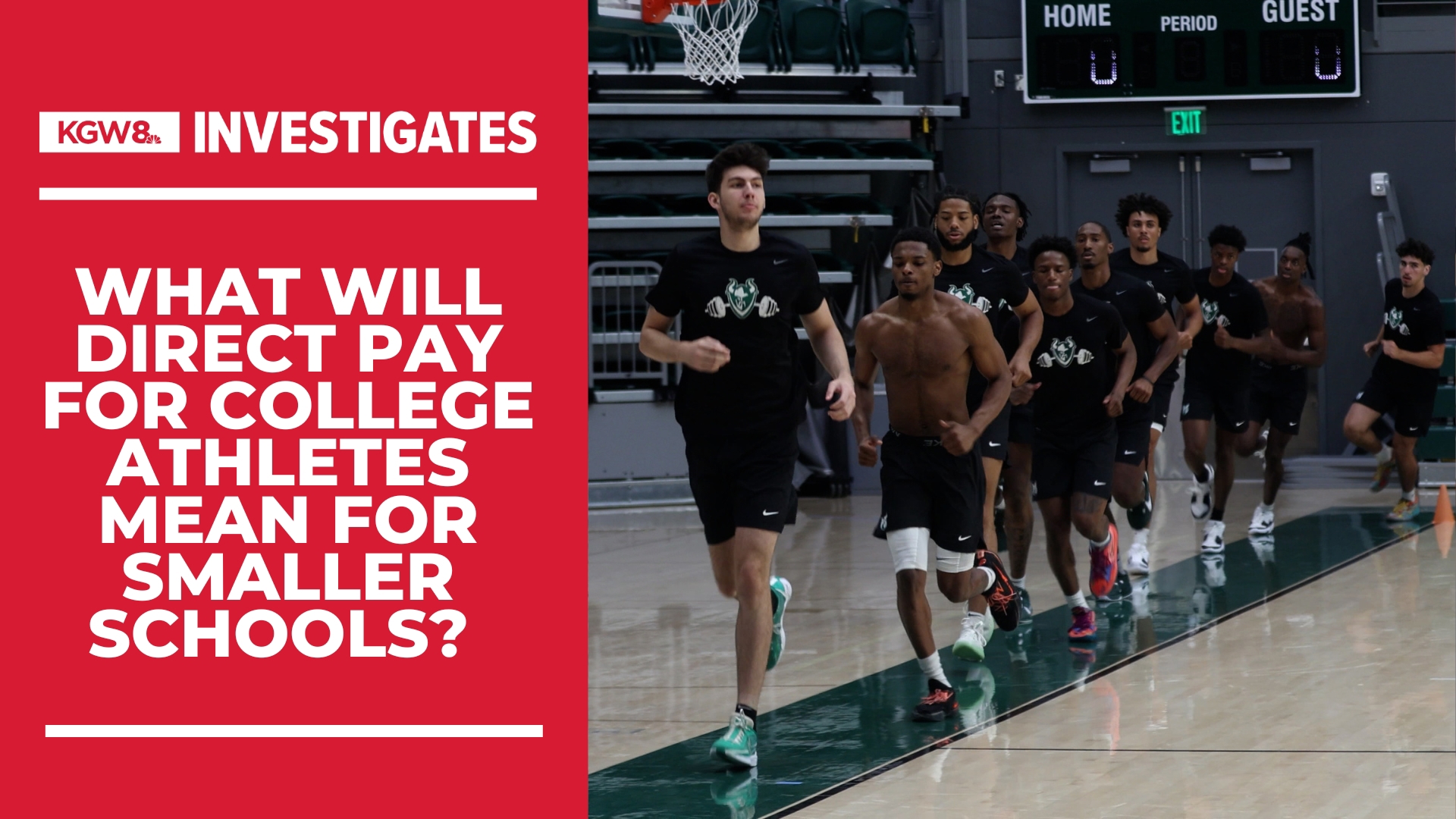CORVALLIS, Ore. — Just like that, the Pac-12 has been reduced to the Pac-2.
Oregon State and Washington State will be the last two standing in the conference after Stanford and California announced Friday they are bolting for the Atlantic Coast Conference in 2024.
There's speculation the Beavers and Cougars may join the Mountain West Conference or lead an effort to absorb some Group of Five teams into a new Pac-12. Either way, its a step down from the Pac-12's current Power Five status.
The reality is both schools are in more rural college towns — Oregon State in Corvallis and Washington State in Pullman — and have smaller media markets. That complicated finding a new home as the conference imploded.
“Obviously, our market size, eyeballs on televisions, did not create the leverage needed to be in a different circumstance," Oregon States athletic director Scott Barnes said. “That said, know this, that we will find the right place for our student-athletes, the highest and best place for them to compete, as well as our coaches."
The Beavers and the Cougars made it clear they are working together to find, or create, a solution.
“Washington State has been in ongoing contact with Oregon State University as we move forward,” Washington State said in a statement released on social media. “We will continue to fight for Washington State as we explore all options to secure the best possible future for Cougar athletics.”
At least one route for the schools was closed off Friday: The American Athletic Conference released a statement that said “we have concluded that the best way to proceed for our outstanding student-athletes is to not look westward.”
The latest departures come as both Oregon State and Washington State prepare to open their football seasons. The No. 18 Beavers visit San Jose State on Sunday, while the Cougars visit Colorado State on Saturday. Both games could be a harbinger of what's to come: San Jose State and Colorado State are in the Mountain West.
Oregon State President Jayathi Murthy said a decision for the Beavers will likely come in weeks, not months. Her hope is that the Pac-12 brand can be retained in some way.
“We continue to look for options that work for us, where the needs of our students-athletes are taken care of, where our athletic and academic values align, and where we can play at the national level and be visible,” she said. “But jumping from a conference was never the first option, making the conference work is always where my heart and my mind lay. And I’m sorry that a top-20 football team ends up where we are because of the focus on media rights and media valuations.”
Eight other teams from the so-called “Conference of Champions” had previously announced plans to depart next year. USC, UCLA, Oregon and Washington are headed to the Big Ten, while Arizona, Arizona State, Colorado and Utah will play in the Big 12.
Barnes said that Oregon Sate's revenue will drop with the demise of the Pac-12.
“Our priority is what it’s always been, and that’s to retain a very high level, vibrant, holistic experience for our student-athletes. We pride ourselves in that, the services that they receive, the competition they have. And so, we will focus on that as we move forward,” Barnes said. "But make no mistake, as we continue the path forward, we know that revenues will be less. How much less? Not certain yet.”
Oregon State recently completed a $160 million renovation of Reser Stadium which Barnes said would not be impacted by the realignment because of how the funding for the project was structured.
Washington State, meanwhile, announced in June that it is facing an $11.5 million deficit in the athletic department. The Cougars spent millions to refurbish their athletic facilities with the expectation that future TV revenue would help pay some of those bills — but the current Pac-12 media rights deal didn't meet those expectations.
The media deal expires next year with no replacement in place.
___
AP Sports Writer Tim Booth in Seattle contributed to this report.



